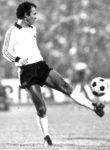Erling Haaland’s record-breaking performances in his debut season in the Premier League might suggest he’s the perfect striker, but recent tactical challenges at Manchester City raise questions. Despite topping the scoring charts and playing a pivotal role in City’s successes, his fit within Pep Guardiola’s strategic framework remains a point of debate, especially after their unexpected exit from the Champions League at the hands of Real Madrid.
At first glance, questioning Haaland’s impact seems absurd. The Norwegian striker smashed the Premier League goalscoring record in his debut season, netting 36 goals. Yet, it’s this prolific ability in front of goal that paradoxically highlights potential tactical drawbacks for City. Critics, including Sky Sports’ Roy Keane, have pointed out that while Haaland is exceptional in scoring, his general play could see improvement, likening his non-scoring contributions to a lower-league player.
Tactical Fit: The False Nine Preference
Guardiola’s preference for a fluid, dynamic attacking style often hinges on the use of a false nine. This role, effectively filled by players like Phil Foden or Julian Alvarez, allows City to maintain possession, dominate midfield interactions, and create spatial advantages—tactics that seem constrained by Haaland’s traditional number nine role.
Manchester City’s display against Aston Villa, where they triumphed 4-1 without Haaland, serves as a reminder of the team’s potential when they revert to this style. The structure allows midfielders and wingers to penetrate opposing defenses more effectively, a strategic depth somewhat stymied by Haaland’s static presence in the central striker position.
Paul Merson of Sky Sports suggests that opponents have adapted to City’s playstyle with Haaland leading the line. Teams now anticipate the direct threat posed by Haaland’s pace and positioning, opting to defend deeper and more compactly, effectively neutralizing some of the spatial benefits City exploits under a false nine system. This adaptation forces City to find new tactical variations, which might not always play to Haaland’s strengths.
Despite Haaland’s individual stats impressing, team metrics tell a different story. City boasts a higher win rate in games Haaland does not start. This statistic might indicate that City’s adaptability and fluidity increase without a traditional striker, aligning better with Guardiola’s historical tactical preferences.
Nevertheless, Guardiola remains supportive of Haaland, attributing the lack of creativity in certain matches to broader team dynamics rather than individual performance. The manager emphasizes the complexity of football where multiple factors contribute to each outcome, signaling his belief in Haaland’s role within the team.
As the season progresses, the “Haaland problem,” as it might be termed, does not seem to perturb Guardiola overly. The striker’s ability to secure goals, even in tight fixtures, coupled with City’s position atop the Premier League, suggests that while tactical adjustments are necessary, Haaland’s presence offers more solutions than problems.
Erling Haaland’s situation at Manchester City encapsulates the nuanced balance between individual brilliance and team strategy. While he continues to perform as one of the world’s best forwards, the tactical fit within Guardiola’s preferred system poses challenges that Manchester City will need to address, especially in European competitions where strategic depth and flexibility are crucial. As City adapts, so too will Haaland likely evolve, potentially redefining his role to meet the tactical demands of his coach and the dynamic nature of Premier League football.









